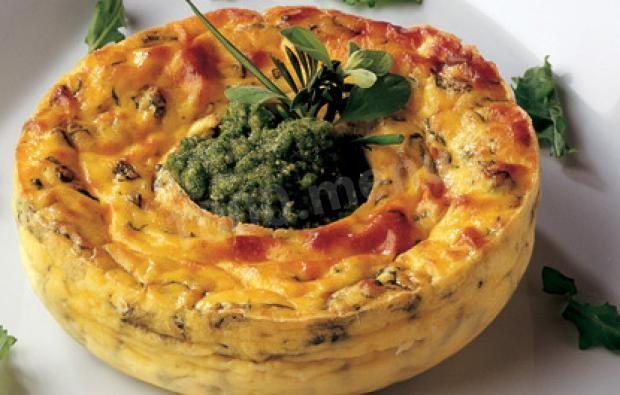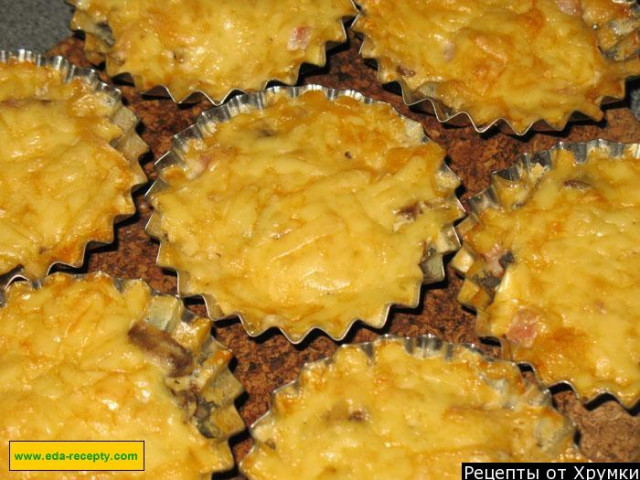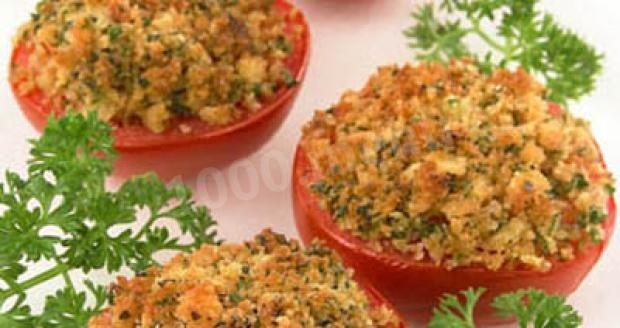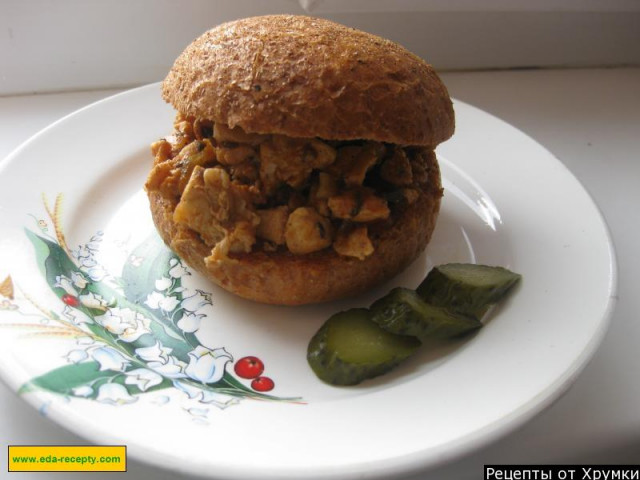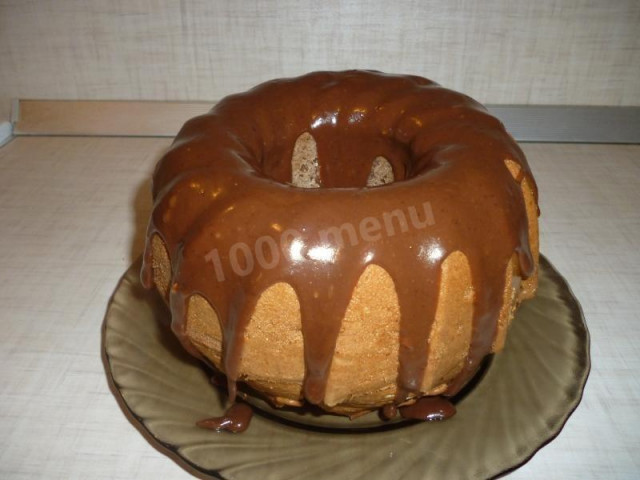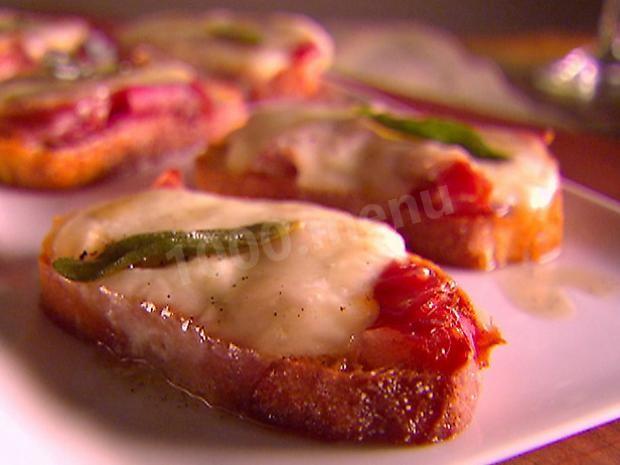Formatini with ricotta and arugula
Composition / ingredients
8
servings:
Cooking method
Formatini with ricotta and arugula – just by the name of this dish it becomes clear that we are dealing with Italian cuisine. This food is served warm, with pesto sauce. Now let's study the culinary recipe of this dish and start cooking.
Preheat the oven to 180 degrees, take small baking molds (150 scales), grease them from the inside with butter and sprinkle with flour.
First, finely chop the onion. Next, pour olive oil into the pan, heat it on the stove and start frying arugula leaves and onions. You need to pass them for about 2-3 minutes. When they get a golden color, remove the pan from the fire, transfer its contents to a plate. Let the arugula and onion cool down.
Put the arugula in a large bowl and add the ricotta cheese, eggs and salt. Shake this mixture well and divide evenly into molds.
Place the molds in the oven and bake for 25 minutes. When the formatini is ready, it should easily lag behind the edges of the molds.
Now we will take the finished gelatinis out of the oven and they need time to cool down. When they cool down, we will release the formatini from the molds and with a knife we will make holes in the middle of each of them.
Before serving, put the gelatine on a platter and put 1 teaspoon of pesto in the hole of each. Decorate the top with raw arugula leaves.
Preheat the oven to 180 degrees, take small baking molds (150 scales), grease them from the inside with butter and sprinkle with flour.
First, finely chop the onion. Next, pour olive oil into the pan, heat it on the stove and start frying arugula leaves and onions. You need to pass them for about 2-3 minutes. When they get a golden color, remove the pan from the fire, transfer its contents to a plate. Let the arugula and onion cool down.
Put the arugula in a large bowl and add the ricotta cheese, eggs and salt. Shake this mixture well and divide evenly into molds.
Place the molds in the oven and bake for 25 minutes. When the formatini is ready, it should easily lag behind the edges of the molds.
Now we will take the finished gelatinis out of the oven and they need time to cool down. When they cool down, we will release the formatini from the molds and with a knife we will make holes in the middle of each of them.
Before serving, put the gelatine on a platter and put 1 teaspoon of pesto in the hole of each. Decorate the top with raw arugula leaves.
Caloric content of the products possible in the composition of the dish
- Dutch cheese - 352 kcal/100g
- Swiss cheese - 335 kcal/100g
- Russian cheese - 366 kcal/100g
- Kostroma cheese - 345 kcal/100g
- Yaroslavsky cheese - 361 kcal/100g
- Altai cheese 50% fat content - 356 kcal/100g
- Soviet cheese - 400 kcal/100g
- Cheese "steppe" - 362 kcal/100g
- Uglich cheese - 347 kcal/100g
- Poshekhonsky cheese - 350 kcal/100g
- Lambert cheese - 377 kcal/100g
- Appnzeller cheese with 50% fat content - 400 kcal/100g
- Chester cheese with 50% fat content - 363 kcal/100g
- Edamer cheese with 40% fat content - 340 kcal/100g
- Cheese with mushrooms of 50% fat content - 395 kcal/100g
- Emmental cheese with 45% fat content - 420 kcal/100g
- Gouda cheese with 45% fat content - 356 kcal/100g
- Aiadeus cheese - 364 kcal/100g
- Dom blanc cheese (semi-hard) - 360 kcal/100g
- Lo spalmino cheese - 61 kcal/100g
- Cheese "etorki" (sheep, hard) - 401 kcal/100g
- White cheese - 100 kcal/100g
- Fat yellow cheese - 260 kcal/100g
- Altai cheese - 355 kcal/100g
- Kaunas cheese - 355 kcal/100g
- Latvian cheese - 316 kcal/100g
- Limburger cheese - 327 kcal/100g
- Lithuanian cheese - 250 kcal/100g
- Lake cheese - 350 kcal/100g
- Gruyere cheese - 396 kcal/100g
- Butter 82% - 734 kcal/100g
- Amateur unsalted butter - 709 kcal/100g
- Unsalted peasant butter - 661 kcal/100g
- Peasant salted butter - 652 kcal/100g
- Melted butter - 869 kcal/100g
- Salt - 0 kcal/100g
- Onion - 41 kcal/100g
- Wheat flour - 325 kcal/100g
- Olive oil - 913 kcal/100g
- Chicken egg - 80 kcal/100g
- Arugula - 25 kcal/100g
- Pesto sauce - 565 kcal/100g

